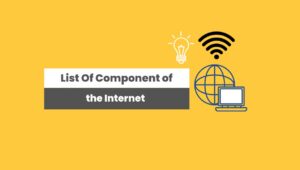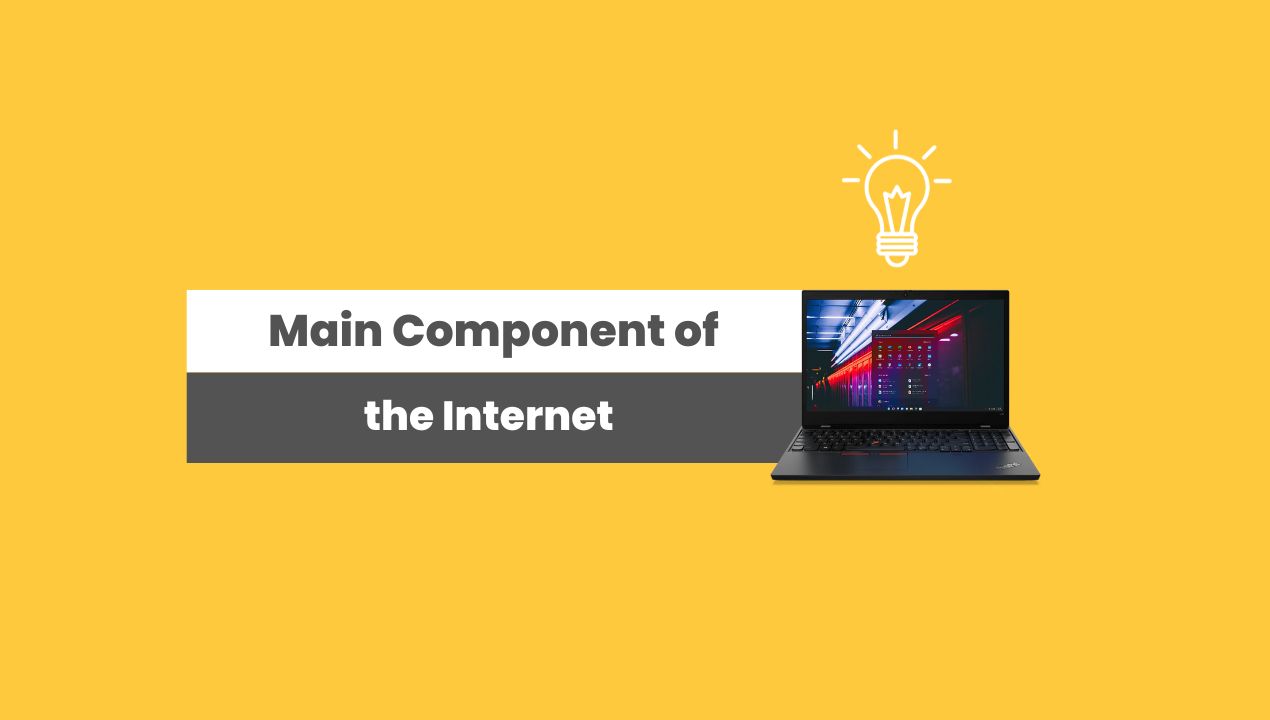Have you ever wondered what makes the Internet work? It’s like a big, complicated puzzle, and at the center of it all is something really important. We call it the “Main Component.”
Think of the Internet like a giant web that connects people, information, and all the fun stuff you do online. But just like a puzzle, the Internet has one special piece that holds everything together. That piece is the Main Component.
So, What is the Main Component of the Internet? It’s the part that helps information travel from one place to another, lets you chat with friends, shop online, and do so many other things.
In this article, we’re going to take you on to discover what this Main Component is all about.
So, join us on this journey to uncover the Internet’s Main Components.
Understanding Internet?
The Internet, short for “interconnected networks,” is a global system of interconnected computer networks that use a standardized set of communication protocols to link devices and servers worldwide.
It is essentially a vast, decentralized network that connects billions of computers, smartphones, tablets, and other devices, allowing them to communicate, share information, and access resources.
At its core, the Internet is a network of networks, where smaller networks owned by organizations, internet service providers (ISPs), and individuals are linked together to create a worldwide web of interconnected devices.
These networks use a common set of rules and technologies, such as the Internet Protocol (IP), to enable data exchange and communication.

Learn What is the Main Component of the Internet?
The Internet is a complex system with several main components that work together to enable its functionality. These components include:
Network Infrastructure: The backbone of the Internet consists of a vast network of high-speed fiber-optic cables, data centers, routers, and switches. These physical components ensure data can be transmitted across the globe.
Protocols: The Internet relies on a set of communication protocols, the most fundamental being the Internet Protocol (IP). IP allows data packets to be routed between devices, ensuring data reaches its intended destination. Other protocols, like TCP (Transmission Control Protocol), HTTP (Hypertext Transfer Protocol), and DNS (Domain Name System), facilitate various aspects of Internet communication.
Servers: Servers are powerful computers that store and deliver web content, email, and other data to users. Web servers, for example, host websites and web applications, while email servers handle the transmission of email messages.
Clients: Clients are devices used by individuals to access the Internet. This includes personal computers, smartphones, tablets, and various Internet of Things (IoT) devices. Web browsers, email clients, and other software allow users to interact with Internet services.
Data Centers: These are facilities where numerous servers are housed to provide scalability and redundancy. Data centers ensure websites and online services remain available and responsive. Cloud providers like Amazon Web Services (AWS), Google Cloud, and Microsoft Azure operate massive data centers that host a wide range of online services.
Router: An Internet router is a device that plays a crucial role in networking by connecting multiple computer devices within a local area network (LAN) to the Internet. It acts as a bridge between your home or office network and the broader Internet.
Network Switch : A network switch is a fundamental networking device used to connect multiple devices within a local area network (LAN) and enable them to communicate with each other. It operates at the data link layer (Layer 2) of the OSI model and is often found in both home and business network setups.
Web Addresses (URLs): Uniform Resource Locators (URLs) are human-readable addresses that allow users to access specific websites or resources on the Internet. They consist of a protocol (e.g., http:// or https://), a domain name (e.g.,example.com), and a specific path to the resource.
Domain Name System (DNS): The DNS is a distributed database that translates human-friendly domain names (like example.com) into IP addresses that computers use to locate servers on the Internet. It acts as a digital address book for the Internet.
Search Engines: Search engines like Google and Bing help users discover content on the Internet. They use complex algorithms to index and rank web pages, making it easier to find specific information.
Security Measures: Internet security is vital. This includes technologies like firewalls, encryption (e.g., SSL/TLS), and authentication systems to protect data and users from cyber threats.
Internet Service Providers (ISPs): ISPs are companies that provide Internet connectivity to end-users. They play a critical role in delivering Internet access to homes, businesses, and other organizations.
These components work together to create the Internet as we know it. The Internet is a dynamic and ever-evolving system, continuously adapting to technological advancements and the changing needs of its users.


